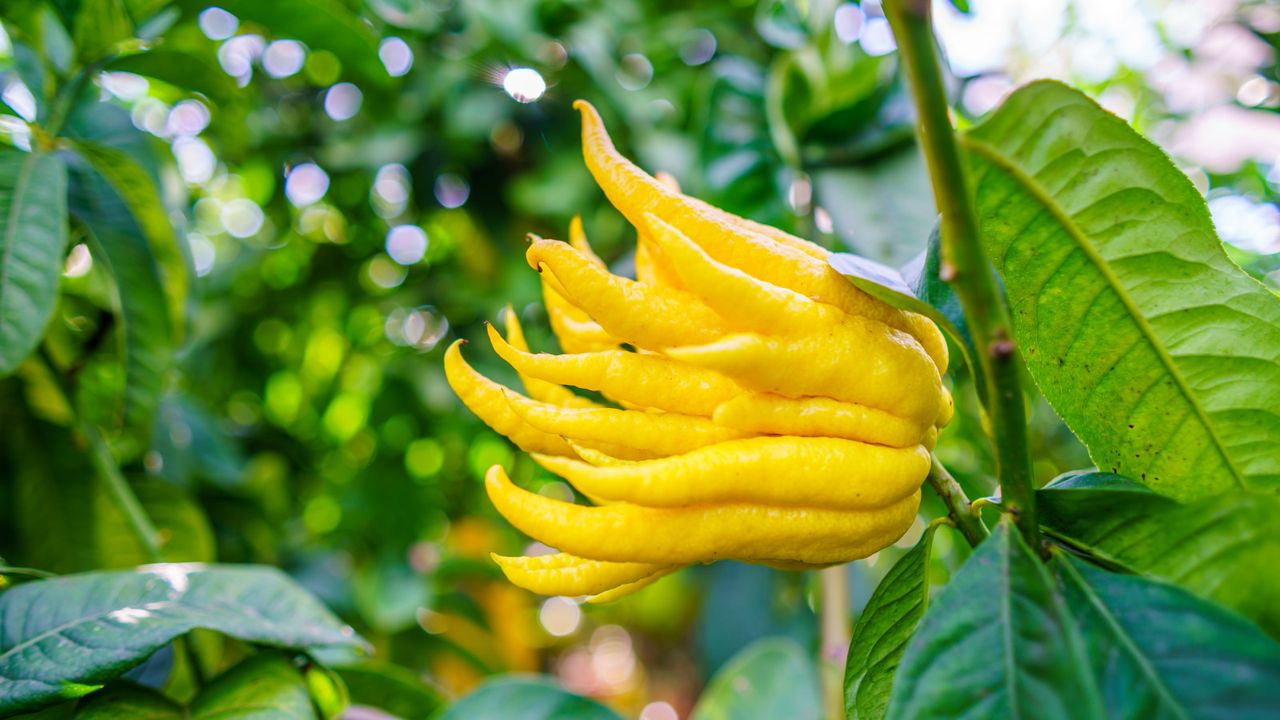
There are the classic fruits commonly seen in gardens, such as apples, pears, and raspberries. However, there are also unique and occasionally unknown fruits that are rarely seen, which I believe is a pity. These are the plants I want to highlight here as I explore some of the more unusual fruits to grow at home.
I grew many different fruits during my years as a professional kitchen gardener, ranging from the usual choices to some more exotic ones (well, they were exotic for the northern regions of the UK). As fall is an ideal time to plant fruit trees and soft fruit bushes, it seems a perfect opportunity to look at some unique fruit trees and quirky soft fruits.
To put together this list of unusual fruits to grow, I look back on my own gardening experiences to date and also hear from some expert fruit growers. If you are looking for something a bit different that can impress and provide a bumper crop, this is well worth reading.
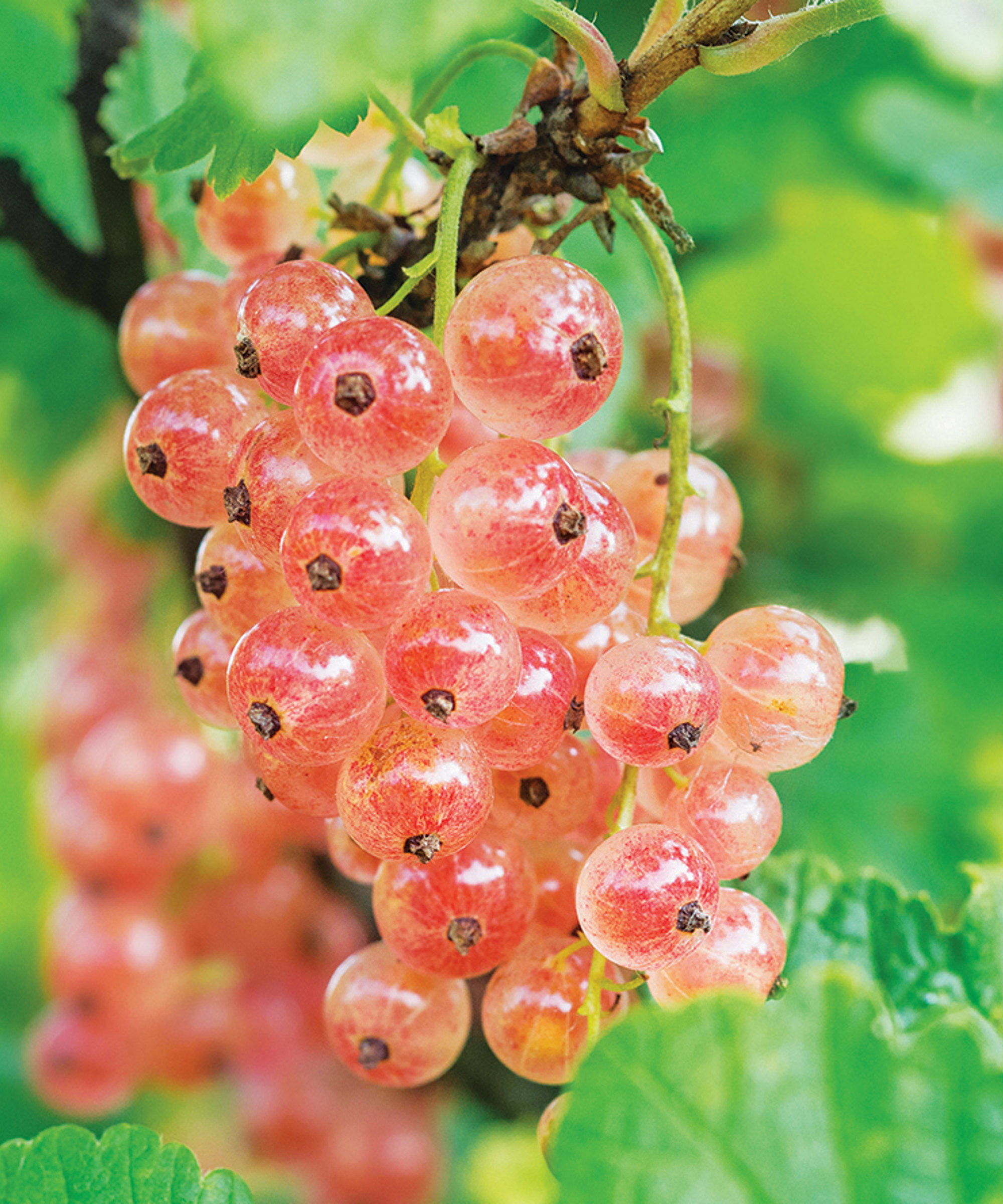
7 Unusual Fruits to Grow
For each of the following, I look at what makes them unusual fruits to grow, why they are well worth planting, and the conditions they need in which to thrive. It means you should be able to find something unique and mouth-watering to grow in your climate and your space, as most of these fruits can be grown in containers in smaller spaces.
1. Buddha's Hand
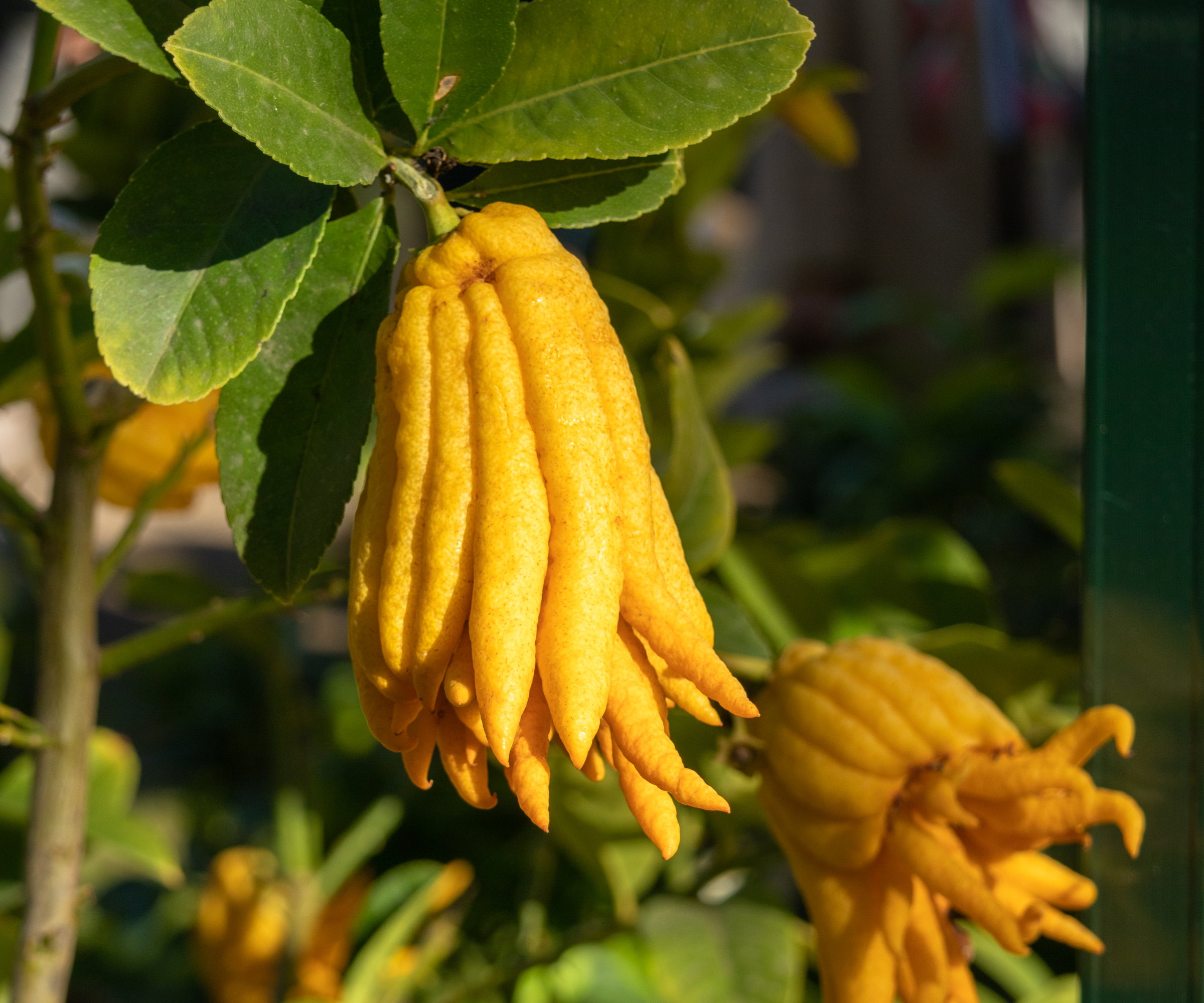
Buddha's hand (Citrus medica var. sarcodactylis) is a unique variety of citrus tree, and the large, bright yellow fruit resembles lots of fingers. It is a distinctive fruit in the citron family with a long history, going back centuries to South or East Asia.
'Grown in warm, frost-free climates, it stands out for its striking appearance and strong lemon fragrance rather than pulp or juice,' says Erin Mittelstaedt, CEO of The FruitGuys.
'Highly aromatic, it's prized for zesting, candying, and adding flavor to sauces or salads, as well as for its unique visual appeal in displays.'
Buddha's hand trees reach 6-8 feet and are suitable for growing outdoors in US hardiness zones 9-11. However, you can grow the fruit tree in pots in US hardiness zones 3 and above, if you overwinter plants indoors in a protected position.
You can get a Buddha's Hand citron tree at Fast Growing Trees to grow indoors or outdoors. It makes an ideal indoor fruit tree, provided it is placed in a greenhouse, conservatory, or near a south-facing window where it receives at least six hours of sunlight daily.
2. Pinkcurrants
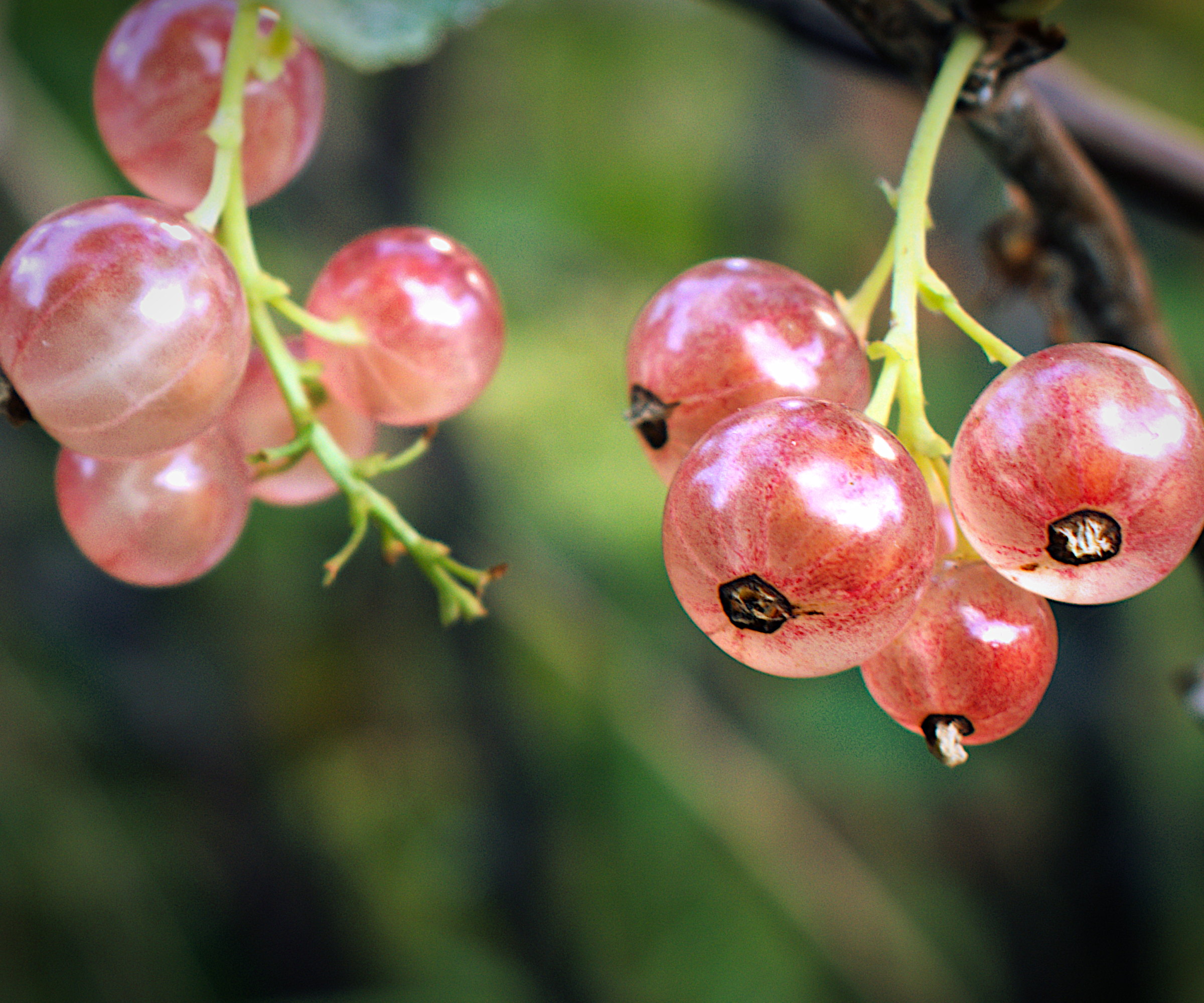
You may know of blackcurrants, even redcurrants or whitecurrants, but what about pinkcurrants? These are rarer than those mentioned above and produce pale-pink, translucent fruits with a beautiful fragrance and sweet taste in mid-to-late July.
I grew pinkcurrants in a walled garden in the UK, and the plants were easy to grow and looked glorious when covered in fruit. The most common type of pinkcurrants is 'Pink Champagne', which is the variety I cultivated, and you can get live 'Pink Champagne' currant bushes at Amazon if you want to grow these unusual fruits in your own garden.
Pinkcurrant bushes thrive in US hardiness zones 3-8, planted in a sunny position with fertile, well-draining soil. Plant bushes at least five feet apart and take care to water deeply during dry spells while the fruits are developing. It can be advisable to net the bushes in summer to prevent birds from stealing all your crop.
3. Jujube
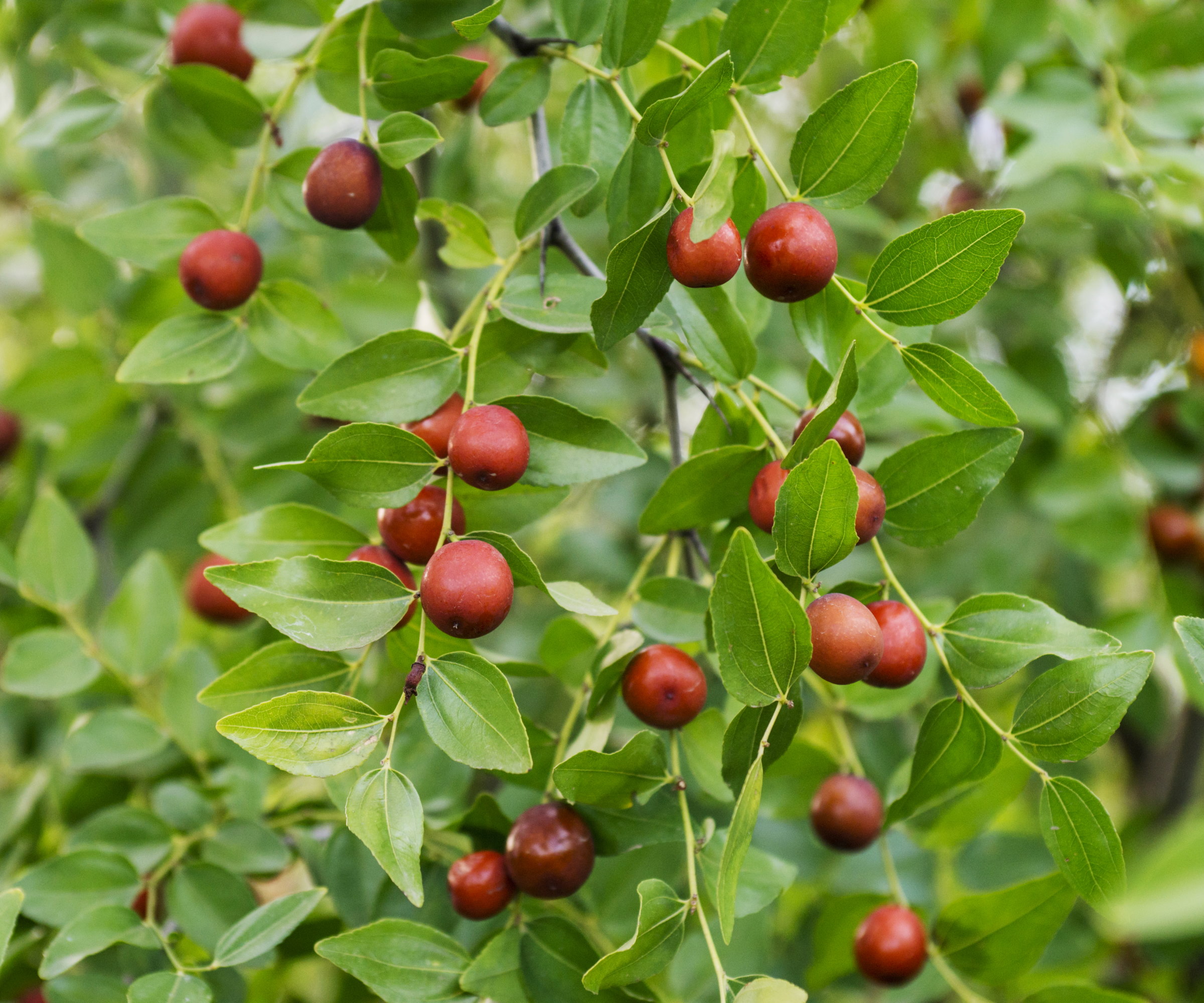
Jujube (Ziziphus jujube) is also known as the red Chinese date. This is because the fruits turn reddish-brown and start to wrinkle when they are ready to harvest, taking on a similar appearance to a date. The precise harvesting time can range from late summer to October, depending on your region.
'The dates aren't as sweet as dates you find in the store, but they are delicious dried,' says Anna Hackman, a Rutgers Master Gardener and owner at The Naked Botanical. 'When they are green, they resemble the taste of an apple. When they are dried, they resemble more of a not-too-sweet date.'
A jujube tree can reach 15 to 30 feet and is suitable for US hardiness zones 6 to 9. The fruit tree wants a planting spot with 6-8 hours of daily sunlight and fertile, well-drained soil.
If you want to grow a jujube tree, two pieces of advice from Anna are that they can be thorny (so wear gloves to prune) and 'do tend to sucker', so they need regular pruning to remove these unwanted shoots.
Get a Honey Jar Jujube Tree at Fast Growing Trees
Get a live four-foot potted Jujube Tree at Amazon
4. Finger Limes
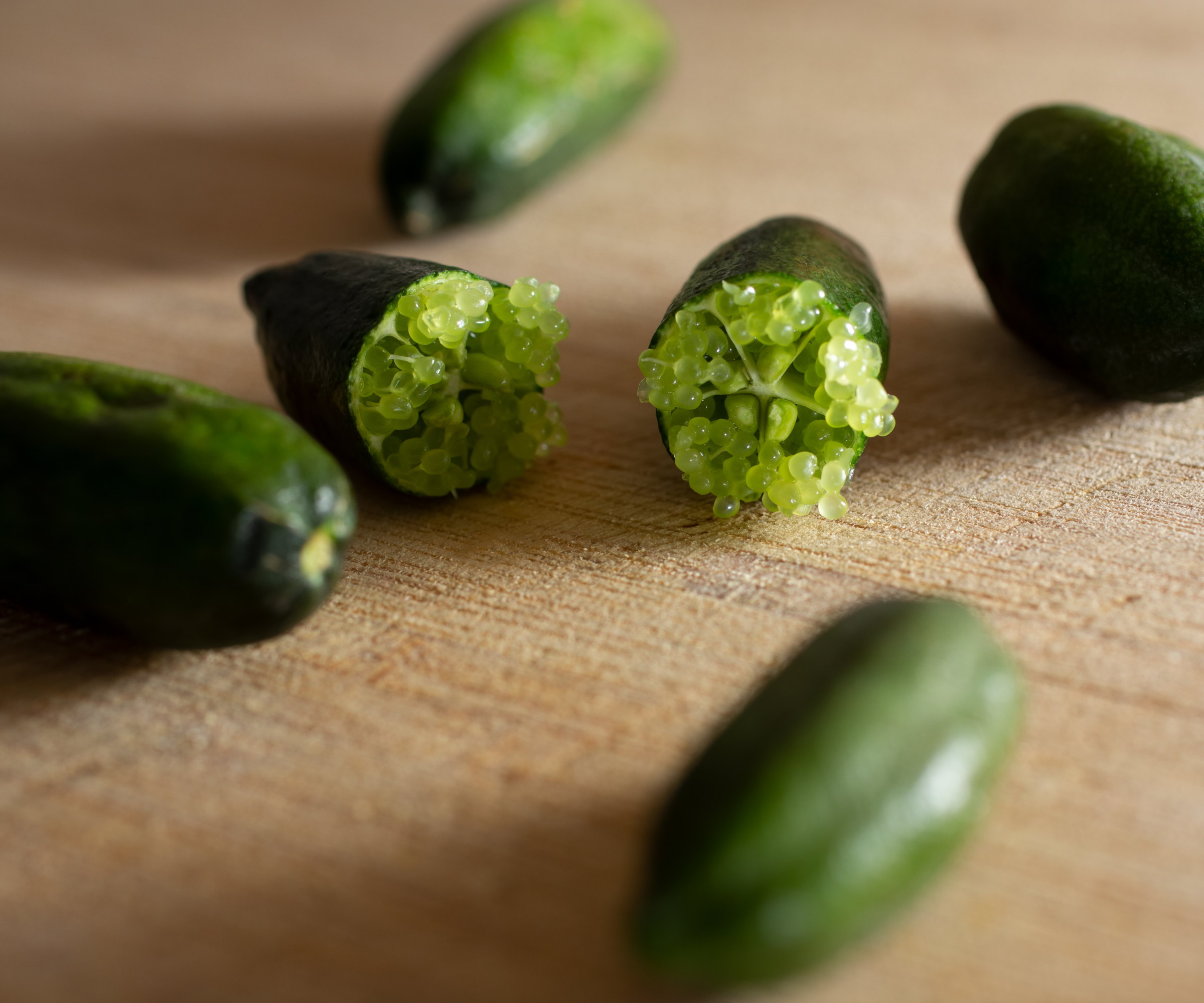
The finger lime, or caviar lime (Citrus australasica), is a compact tree that differs from the traditional Mediterranean lime trees, and the fruit it grows is definitely unique.
Rather than the usual lime fruits, the finger lime produces distinctive finger-shaped fruits that contain lots of tiny pale seeds. Erin Mitteldtaedt describes them as: 'Tiny, pearl-like juice vesicles, often called citrus caviar, that pop with zesty lime flavor.'
'They're packed with Vitamin C and antioxidants, which support immune health and may help reduce inflammation,' she adds.
Finger lime trees prosper in warm subtropical to tropical climates. They can grow outside in zones 9-11, but their compact nature makes them suitable for containers if you want to grow a lime tree in a pot. Trees in containers can spend their summers outside in zones 3 and up, before overwintering indoors.
To get a lime tree to fruit, plant it in an area that receives 6-8 hours of sunlight a day and feed the plant regularly with a dedicated citrus feed, such as these citrus fertilizer spikes available on Amazon.
If you want something particularly eye-catching, this pink finger lime tree at Amazon grows distinctive pink finger-shaped fruits, packed with pink vesicles.
5. Persimmon
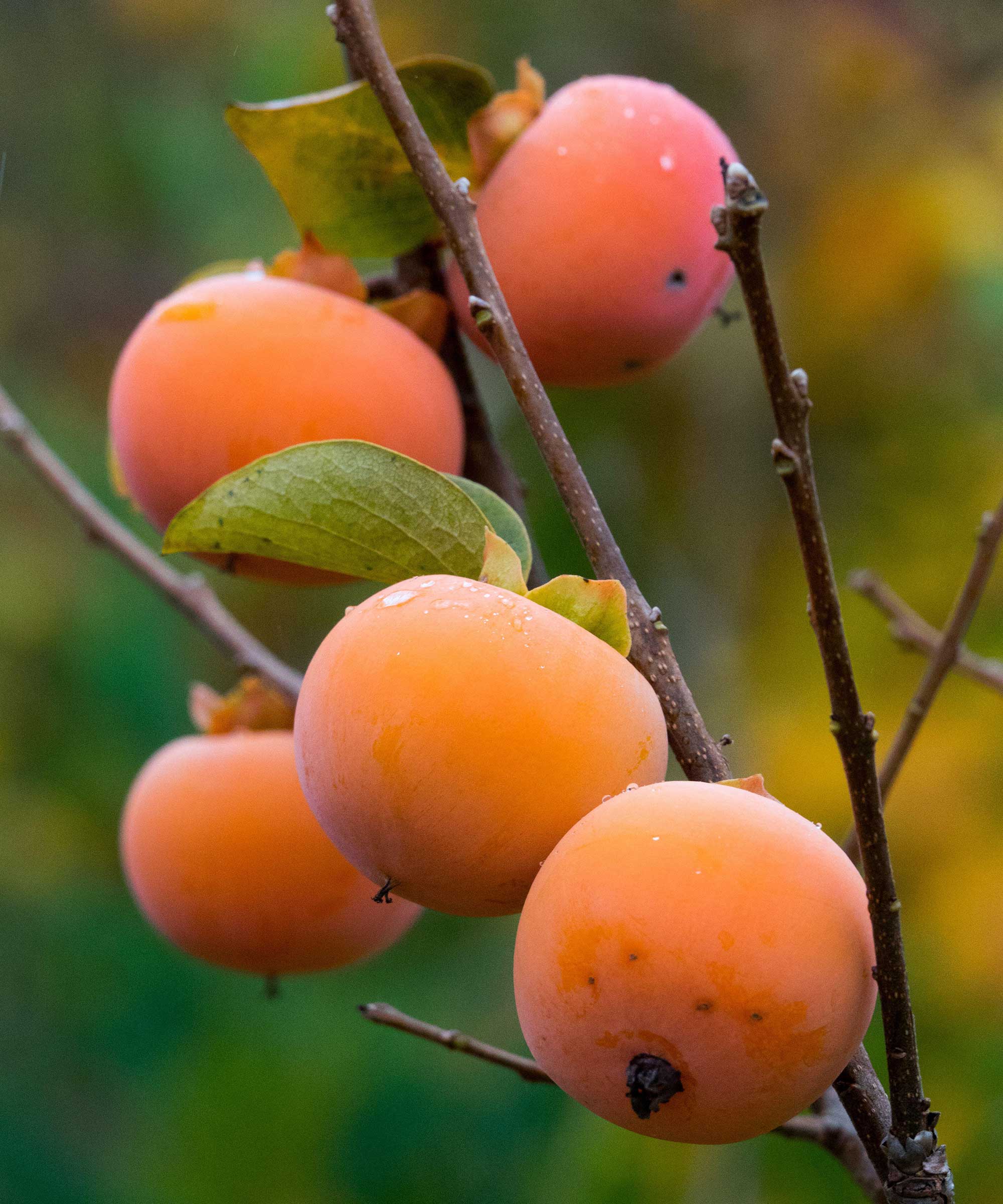
You can get Asian persimmon trees (Diospyros kaki) and American persimmon trees (Diospyros virginiana). The primary difference between the two is size, hardiness, and the size of the fruit.
All persimmon trees offer spectacular ornamental beauty, offering year-round interest from the striking spring blossoms to yellow-orange foliage in the fall. Then there is the pumpkin-shaped fruit, which can be yellow, orange, or red, with its custard-like flesh and mango-like taste, that truly makes these unusual fruit trees stand out.
Brie Zettl, director of horticultural production at Stark Bro's Nurseries & Orchards, claims growing Asian persimmons, which produce larger fruit, allows you to 'visit the Far East in your own backyard'. She adds: 'The showy fruit from the land of the rising sun resembles a rising sun itself.'
Persimmon trees can grow in US hardiness zones 4-9, depending on the variety, as American persimmons are more cold-hardy. Varieties can reach 20-20 feet tall, but there are dwarf cultivars available if you want to grow a persimmon tree in a container. If you do want a persimmon tree to fruit, look for self-fertile varieties or plant more than one tree.
You can plant persimmon seeds and try to grow your own, which does come with the risk of low germination rates, or purchase a live persimmon tree at Amazon to plant in your backyard to experience the joys of this fantastic fruit tree.
6. Honeyberries
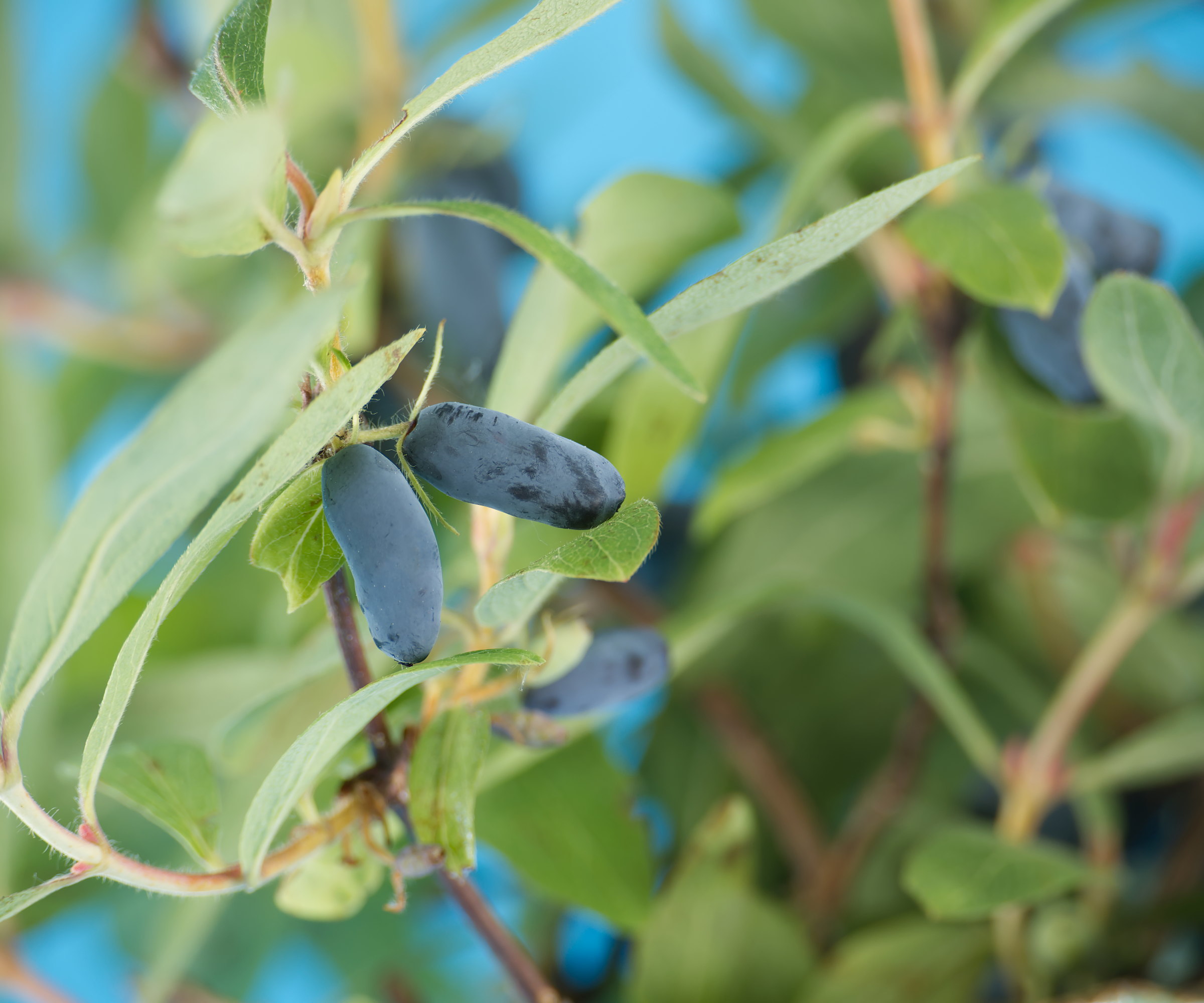
Honeyberries (Lonicera caerulea) are fruits, but in the honeysuckle family. The unique fruit resembles an elongated blueberry, but tastes like a cross between blueberries and raspberries. They are early-season fruits that ripen in late May and early June.
A fantastic reason to grow honeyberry plants, apart from the distinctive fruits, is that they are very cold-hardy fruits that can grow all the way down to US hardiness zone 2.
Whether in the ground or in containers, plant them in full sun, though honeyberries can happily grow in a part-shade spot. In warmer climates, keep them protected from hot afternoon sun.
You do need to plant two bushes to get fruit, spaced at least five feet apart, that can be planted in fall or spring into well-draining, slightly acidic soil. Honeyberries tend to enjoy the same conditions as growing blueberries.
You can get a bare-root starter honeyberry plant at Walmart to add to your fruit garden.
7. Pawpaw
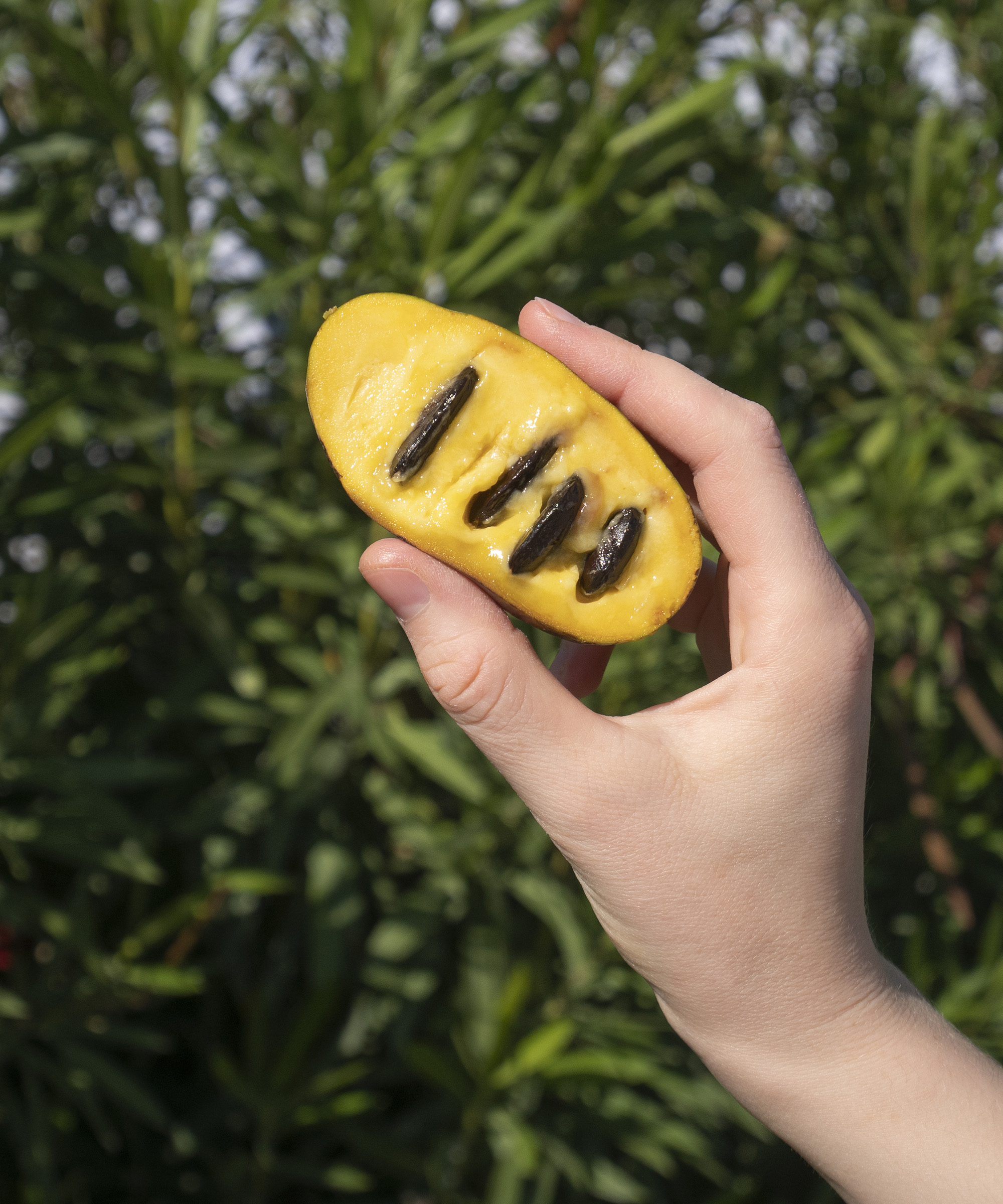
Pawpaw trees (Asimina triloba) are native plants to North America, and the largest native edible fruit. Reasons to grow a pawpaw fruit are that you get tropical fruits without the need for a tropical climate, as pawpaws enjoy warm summers yet can tolerate colder winters; indeed, they are suitable for US hardiness zones 5-9.
Brie Zettl highlights Pawpaw 'Pennsylvania Golden' as 'a must-have species for native plant lovers'. You can get a Pawpaw 'Pennsylvania Golden' at Stark Bros' to add this compact tree to your backyard.
She says: 'It is an attractive small tree with tropical-looking, large leaves and striking yellow fall color. It produces fruit with a taste and texture reminiscent of banana and makes a lovely custard dessert.'
Compact varieties of pawpaw trees offer the luxury of enjoying large, tasty, tropical fruits even in smaller backyards, and, while many varieties need another tree for pollination, there are self-fertile cultivars available.
Plant a pawpaw tree in a sunny spot in the backyard, and, once established, always prune a pawpaw tree in late winter.
For an unusual twist on a popular fruit bush, you could consider a 'Pink Lemonade' blueberry. As the name suggests, this cultivar produces striking pink blueberries in late summer and offers a unique alternative to the usual blue fruits. The pink berries also have a more citrussy flavour than traditional blueberries.
You can plant blueberries in the fall or spring, and get live 'Pink Lemonade' Blueberry starter plants at Amazon to grow a unique crop of berries to dazzle friends, family, and neighbours.







